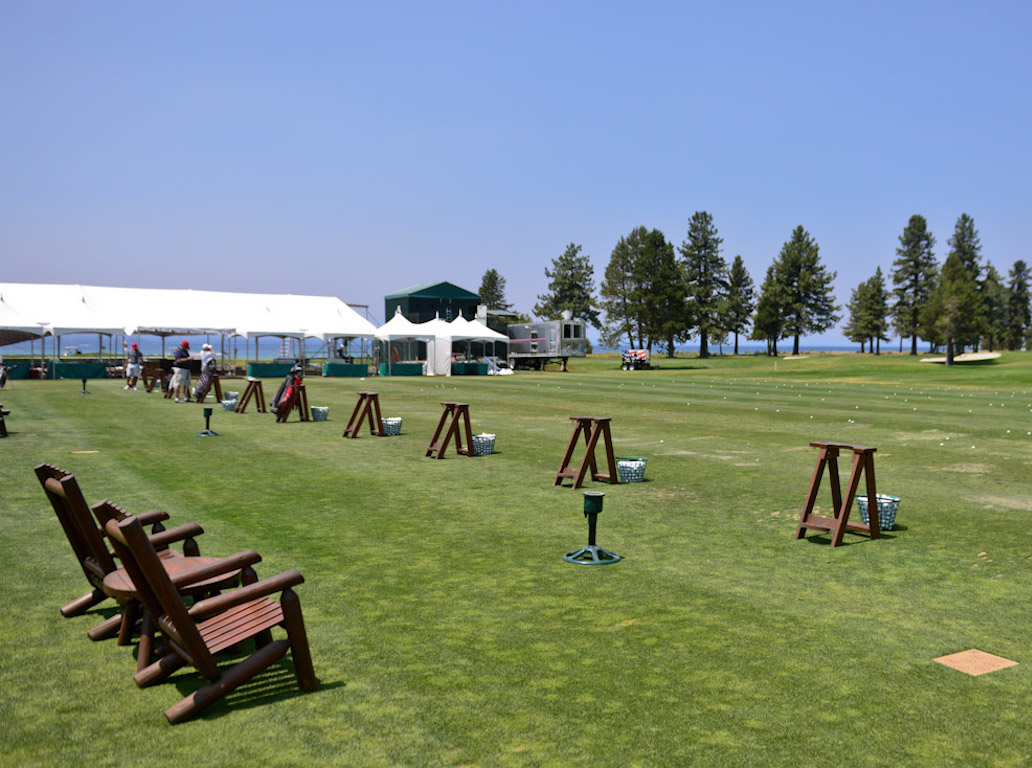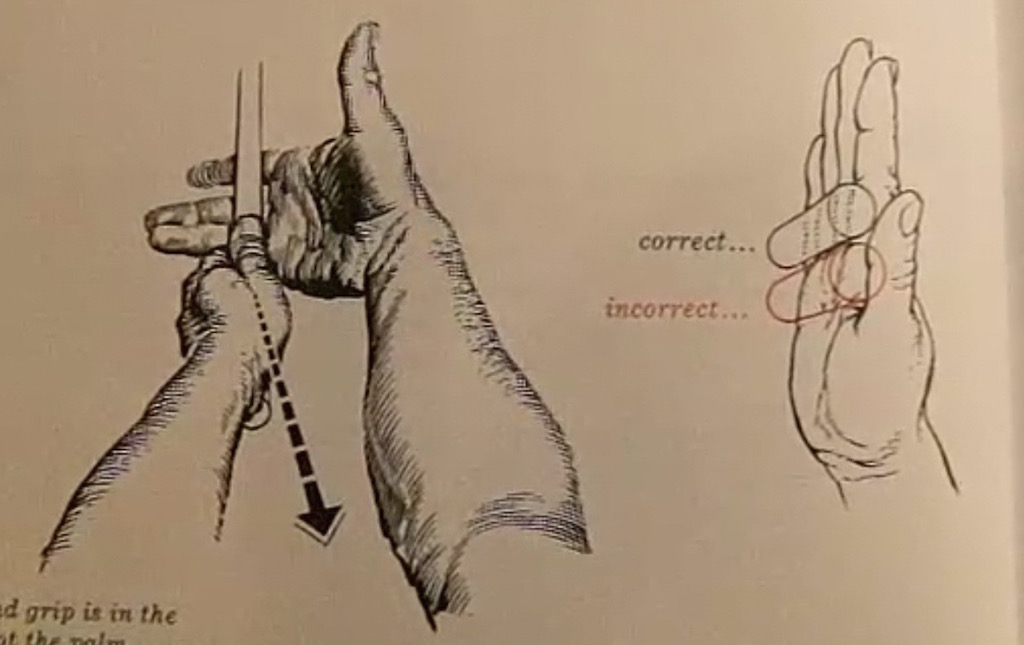Instruction
The Wedge Guy: My top 5 practice tips

While there are many golfers who barely know where the practice (I don’t like calling it a “driving”) range is located, there are many who find it a place of adventure, discovery and fun. I’m in the latter group, which could be accented by the fact that I make my living in this industry. But then, I’ve always been a “ball beater,” since I was a kid, but now I approach my practice sessions with more purpose and excitement. There’s no question that practice is the key to improvement in anything, so today’s topic is on making practice as much fun as playing.
As long as I can remember, I’ve loved the range, and always embrace the challenge of learning new ways to make a golf ball do what I would like it to do. So, today I’m sharing my “top 5” tips for making practice fun and productive.
- Have a mission/goal/objective. Whether it is a practice range session or practice time on the course, make sure you have a clearly defined objective…how else will you know how you’re doing? It might be to work on iron trajectory, or finding out why you’ve developed a push with your driver. Could be to learn how to hit a little softer lob shot or a knockdown pitch. But practice with a purpose …always.
- Don’t just “do”…observe. There are two elements of learning something new. The first is to figure out what it is you need to change. Then you work toward that solution. If your practice session is to address that push with the driver, hit a few shots to start out, and rather than try to fix it, make those first few your “lab rats”. Focus on what your swing is doing. Do you feel anything different? Check your alignment carefully, and your ball position. After each shot, step away and process what you think you felt during the swing.
- Make it real. To just rake ball after ball in front of you and pound away is marginally valuable at best. To make practice productive, step away from your hitting station after each shot, rake another ball to the hitting area, then approach the shot as if it was a real one on the course. Pick a target line from behind the ball, meticulously step into your set-up position, take your grip, process your one swing thought and hit it. Then evaluate how you did, based on the shot result and how it felt.
- Challenge yourself. One of my favorite on-course practice games is to spend a few minutes around each green after I’ve played the hole, tossing three balls into various positions in an area off the green. I don’t let myself go to the next tee until I put all three within three feet of the hole. If I don’t, I toss them to another area and do it again. You can do the same thing on the range. Define a challenge and a limited number of shots to achieve it.
- Don’t get in a groove. I was privileged enough to watch Harvey Penick give Tom Kite a golf lesson one day, and was struck by the fact that he would not let Tom hit more than five to six shots in a row with the same club. Tom would hit a few 5-irons, and Mr. Penick would say, “hit the 8”, then “hit the driver.” He changed it up so that Tom would not just find a groove. That paved the way for real learning, Mr. Penick told me.
My “bonus” tip addresses the difference between practicing on the course and keeping a real score. Don’t do both. A practice session is just that. On-course practice is hugely beneficial, and it’s best done by yourself, and at a casual pace. Playing three or four holes in an hour or so, taking time to hit real shots into and around the greens, will do more for your scoring skills than the same amount of range time.
So there you have my five practice tips. I’m sure I could come up with more, but then we always have more time, right?
More from the Wedge Guy
- The Wedge Guy: Anyone can be a better wedge player by doing these simple things
- Wedge Guy: There’s no logic to iron fitting
- The Wedge Guy: Mind the gap
- LIKE98
- LEGIT12
- WOW1
- LOL2
- IDHT0
- FLOP1
- OB1
- SHANK7
Instruction
Clement: Weak grips are injuries in the making for many golfers

Like Jordan Spieth, trying to go to a bowed wrist at the top or in the downswing to square the club is placing you in a dangerous position for your lead wrist; you are one tree root or deep rough situation away from a nasty injury that could easily require surgery. Don’t let this be you.
- LIKE0
- LEGIT0
- WOW0
- LOL0
- IDHT0
- FLOP2
- OB0
- SHANK3
Instruction
Clement: Laid-off or perfect fade? Across-the-line or perfect draw?

Some call the image on the left laid off, but if you are hitting a fade, this could be a perfect backswing for it! Same for across the line for a draw! Stop racking your brain with perceived mistakes and simply match backswing to shot shape!
- LIKE1
- LEGIT0
- WOW0
- LOL0
- IDHT0
- FLOP0
- OB0
- SHANK1
Instruction
The Wedge Guy: The easiest-to-learn golf basic

My golf learning began with this simple fact – if you don’t have a fundamentally sound hold on the golf club, it is practically impossible for your body to execute a fundamentally sound golf swing. I’m still a big believer that the golf swing is much easier to execute if you begin with the proper hold on the club.
As you might imagine, I come into contact with hundreds of golfers of all skill levels. And it is very rare to see a good player with a bad hold on the golf club. There are some exceptions, for sure, but they are very few and very far between, and they typically have beat so many balls with their poor grip that they’ve found a way to work around it.
The reality of biophysics is that the body moves only in certain ways – and the particulars of the way you hold the golf club can totally prevent a sound swing motion that allows the club to release properly through the impact zone. The wonderful thing is that anyone can learn how to put a fundamentally sound hold on the golf club, and you can practice it anywhere your hands are not otherwise engaged, like watching TV or just sitting and relaxing.
Whether you prefer an overlap, interlock or full-finger (not baseball!) grip on the club, the same fundamentals apply. Here are the major grip faults I see most often, in the order of the frequency:
Mis-aligned hands
By this I mean that the palms of the two hands are not parallel to each other. Too many golfers have a weak left hand and strong right, or vice versa. The easiest way to learn how to hold the club with your palms aligned properly is to grip a plain wooden ruler or yardstick. It forces the hands to align properly and shows you how that feels. If you grip and re-grip a yardstick several times, then grip a club, you’ll see that the learning curve is almost immediate.
The position of the grip in the upper/left hand
I also observe many golfers who have the butt of the grip too far into the heel pad of the upper hand (the left hand for right-handed players). It’s amazing how much easier it is to release the club through the ball if even 1/4-1/2″ of the butt is beyond the left heel pad. Try this yourself to see what I mean. Swing the club freely with just your left hand and notice the difference in its release from when you hold it at the end of the grip, versus gripping down even a half inch.
To help you really understand how this works, go to the range and hit shots with your five-iron gripped down a full inch to make the club the same length as your seven-iron. You will probably see an amazing shot shape difference, and likely not see as much distance loss as you would expect.
Too much lower (right) hand on the club
It seems like almost all golfers of 8-10 handicap or higher have the club too far into the palm of the lower hand, because that feels “good” if you are trying to control the path of the clubhead to the ball. But the golf swing is not an effort to hit at the ball – it is a swing of the club. The proper hold on the club has the grip underneath the pad at the base of the fingers. This will likely feel “weak” to you — like you cannot control the club like that. EXACTLY. You should not be trying to control the club with your lower/master hand.
Gripping too tightly
Nearly all golfers hold the club too tightly, which tenses up the forearms and prevents a proper release of the club through impact. In order for the club to move back and through properly, you must feel that the club is controlled by the last three fingers of the upper hand, and the middle two fingers of the lower hand. If you engage your thumbs and forefingers in “holding” the club, the result will almost always be a grip that is too tight. Try this for yourself. Hold the club in your upper hand only, and squeeze firmly with just the last three fingers, with the forefinger and thumb off the club entirely. You have good control, but your forearms are not tense. Then begin to squeeze down with your thumb and forefinger and observe the tensing of the entire forearm. This is the way we are made, so the key to preventing tenseness in the arms is to hold the club very lightly with the “pinchers” — the thumbs and forefingers.
So, those are what I believe are the four fundamentals of a good grip. Anyone can learn them in their home or office very quickly. There is no easier way to improve your ball striking consistency and add distance than giving more attention to the way you hold the golf club.
More from the Wedge Guy
- The Wedge Guy: Golf mastery begins with your wedge game
- The Wedge Guy: Why golf is 20 times harder than brain surgery
- The Wedge Guy: Musings on the golf ball rollback
- LIKE91
- LEGIT16
- WOW6
- LOL1
- IDHT0
- FLOP4
- OB1
- SHANK9
-

 Product Reviews6 days ago
Product Reviews6 days agoThree Swing Challenge: Testing the Edel Array F-2 putter
-

 19th Hole2 weeks ago
19th Hole2 weeks ago‘You’re right, we’re always wrong!’ – Sergio Garcia receives warning during Open qualifier
-

 Equipment7 days ago
Equipment7 days agoWhat clubs do equipment free agents choose to use on tour? We found out
-

 News1 week ago
News1 week agoHighlights from the Wilson Golf Product Testing and Fitting Experience at Pinehurst
-

 News1 week ago
News1 week agoDavis Thompson’s winning WITB: 2024 John Deere Classic
-

 19th Hole1 week ago
19th Hole1 week agoMajor champ ‘disappointed’ not to be chosen as U.S. Ryder Cup captain
-

 Equipment2 weeks ago
Equipment2 weeks agoQ&A: The truth behind Bryson DeChambeau’s new Avoda irons from company founder Thomas Bailey
-

 Whats in the Bag2 weeks ago
Whats in the Bag2 weeks agoCam Davis’ winning WITB: 2024 Rocket Mortgage Classic




























Ned
Oct 19, 2023 at 6:28 am
“Playing three or four holes in an hour or so, taking time to hit real shots into and around the greens” Great idea but isn’t possible at most courses they’re booked up.
Pingback: The Wedge Guy: 3 surefire ways to never get better at golf – GolfWRX
Brandon
Sep 23, 2023 at 9:10 pm
” I don’t let myself go to the next tee until I put all three within three feet of the hole. If I don’t, I toss them to another area and do it again.”
Wow, really, nothing like encouraging slow play.
There are practice greens for this, during a round is not the time.
geohogan
Sep 22, 2023 at 9:57 pm
Tips and check lists… thats all you’ve got.
geohogan
Sep 23, 2023 at 3:17 pm
Does Max Verstappen refer to a check list at 200+ MPH
or did Tiger at top of BS? When consciously directed movement
is not possible eg from top of BS to impact in golf swing
it is only the correct, singular intention that counts.
Bob Jones
Sep 22, 2023 at 10:30 am
Great tips. Numbers 3, 4, and 5, absolutely, though I do #4 mainly around the practice green, and on the course only to practice a shot that a particular green might offer. I think numbers 1 and 2 are productive only if you know what you are doing. Get a lesson and then practice what you learned.